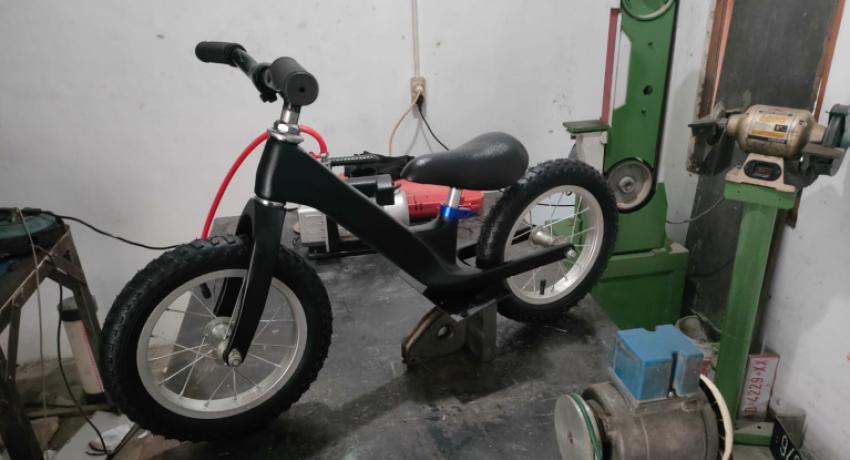Five Universitas Negeri Yogyakarta(UNY) students have developed an innovative balance bike made from jute fiber. The bike serves to train cycling balance for early childhood.
The five students who made the balance bike include Rokhmad Syarifuddin (Mechanical Engineering Education), Alvy Zalyaputra Hermawan (Manufacturing Engineering), Dani Nurdiansyah (Manufacturing Engineering), Priesca Rahmanita (Management) and Desinta Auliya Arsa (Management). During the development process, the student team received guidance from Dr. Mujiono from the Faculty of Engineering UNY.
Lightweight balance bike materials are not cheap. "It requires high quality and relatively expensive materials such as lightweight carbon fiber," said Rokhmad on Tuesday (22/8).
"We aim to develop a lightweight bicycle frame using cheaper materials, and hemp fiber has been chosen as a visible natural material alternative, said Alvy Zalyaputra Hermawan. In addition, the team also utilized carbon waste from bio-stoves (pyrolysis) in the form of carbon powder that can be added to composites.
Dani Nurdiansyah explained that the equipment used was an FDM 3D printing machine, sandpaper, and milling machine. The materials used are PLA plastic, epoxy resin and hemp fiber. "Meanwhile, the software used to design the bicycle uses Solidworks," he said. The first step is designing the bicycle using the Solidworks application by creating a 3D drawing with standard dimensions for early childhood balance bikes. This design is drawn starting from the balance bike's component parts to facilitate the image's printing process. The FDM 3D printing machine used to print the design does not allow it to print the molding as a whole. Therefore, it is printed partially.
"Because the FDM machine has a smaller working size than a bicycle, the mold is divided into eight parts, which are then joined using CA glue and solder to strengthen the connection," said Priesca Rahmanita. After all the parts are put together, finishing is done by sanding and polishing.
"The jute fibers are cut to adjust the shape of the bicycle frame," said Desinta Auliya Arsa. After the fiber parts are prepared, the composite joining matrix, epoxy resin, is ready. Epoxy resin is mixed with a hardener in a ratio of 1 to 1, and added carbon from the remaining combustion of the bio stove (pyrolysis process) is as much as 10%. After the epoxy hardens, the bicycle frame can be removed from the mold and ready for finishing.





